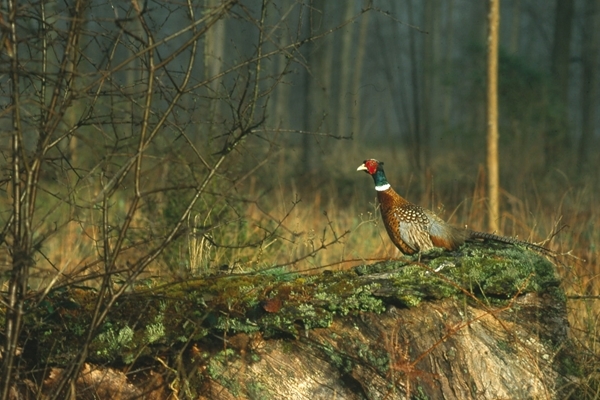
ADVISORS from GWCT are urging shoots to pay more attention to release pen locations and limit pheasant releasing density to reduce negative impacts on woodland flora.
The advice follows a new study carried out by GWCT scientists that looked at the long-term effects of pheasants on the plant community.
Andrew Hoodless, Rufus Sage and Lucy Capstick studied sites which had previously been used as release pens for between 10 and 20 years but had not been used in the past three years.
Sixty-five of these sites were identified in woodland across Berkshire, Dorset, Hampshire, Sussex and Wiltshire.
For each of the disused pens, a reference, or “control” site, was identified in the same piece of woodland but away from the pen itself and from areas where pheasants tend to gather.
At each pen and its control pair, the plants were surveyed at points within the site. These vegetation surveys were carried out between April and July of 2006, 2008 and 2011, where they recorded the amount of bare ground, percentage of ground covered by each plant species and the vegetation cover between ground level and up to 2m in height. Soil samples were also taken at each site visited.
All these measurements were examined to identify any differences between the disused pens and their control sites, considering how long it had been since the pen was used, as well as the typical stocking density when birds were in the pens.
Interestingly, results showed that the changes in soil chemistry and plant species that are known to occur in pheasant release pens, such as an increase in ruderal plants and a decline in woodland specialist plants, continue to affect the area after pheasant release is no longer carried out.
Where the density of released birds was low, woodland plants can recover after around ten years, but for those which stocked with higher densities, the changes persisted even in pens which had not been used for over fifteen years.
Knowing that the woodland takes many years to recover sheds new light on the practice of moving pheasant release pens.
Dr Capstick, lead author of Ground flora recovery in disused pheasant pens is limited and affected by pheasant release density, just published in the journal Biological Conservation, explained: “Moving pheasant release pens around to different locations within the same woodland will result in more of the woodland being affected.”
"To reduce the impact of pheasants on woodland ground flora and soils, we recommend that game managers follow GWCT science-based guidelines on stocking densities and only move release pens where necessary."
Read our summary of the paper
To read our quick summary of the paper, click here.
The paper can be read in full here.

Get The Knowledge for Amazon Kindle - only £9.99. Whether you’re new to shooting, a seasoned gun or just keen to learn more about the way the British countryside is managed, The Knowledge is for you.
Get The Knowledge for Kindle >
Notes to editors
The Game & Wildlife Conservation Trust – providing research-led conservation for a thriving countryside. The GWCT is an independent wildlife conservation charity which has carried out scientific research into Britain’s game and wildlife since the 1930s. We advise farmers and landowners on improving wildlife habitats. We employ more than 60 post-doctoral scientists and other research staff with expertise in areas such as birds, insects, mammals, farming, fish and statistics. We undertake our own research as well as projects funded by contract and grant-aid from government and private bodies.
For information, contact:
Eleanor Williams
Telephone: 07592 025476
Email: press@gwct.org.uk